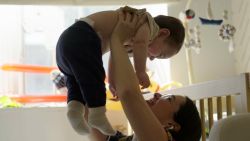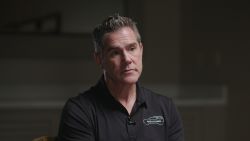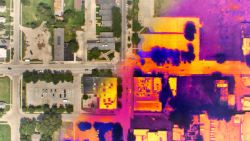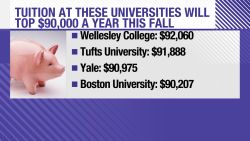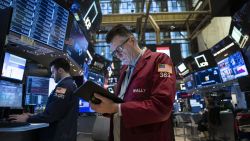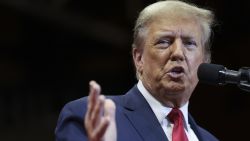The summer travel season, which was all but written off just weeks ago, have some peeks of sunshine after all.
Demand is rising across several segments of the industry as coronavirus restrictions ease in the United States. While people aren’t taking elaborate international vacations this year, they are renting home shares, flying domestically and even taking RVs to explore the wide open road.
Here are some cautious signs that travel is returning:
Airbnb
The home and apartment rental service reported a surge in bookings for the summer. Airbnb revealed that it had more US bookings between May 17 and June 3 than the same time period a year earlier. And it appears the momentum is continuing: Last weekend (June 5 through 7) gross bookings grew year-over-year for the first time since February.
CEO Brian Chesky said he’s noticed travelers are preferring to stick to drivable destinations within 200 miles of their home and that customers are booking stays for one week or longer because of the shift to remote working.
“Work from home is becoming working from any home,” he told Bloomberg News.
Airlines
Shares of major US airlines, including American Airlines (AAL), Delta Air Lines (DAL) and United showed signs of life earlier this week before losing most of those gains in a broader market sell off and a bearish view from an analyst who said the recent rally is overdone.
Still, airlines are bolstering their summer schedules as demand increases. American is taking 140 planes out of storage for an increased July schedule. The Fort Worth-based airline said it’s flying 55% of its normal schedule in July, a huge jump from the 20% it’s flying in June. The airline is seeing an increase in fliers to Florida and mountain destinations in the West.
Delta said it added 100 domestic flights in June and continues to rebuild its schedule in the coming months. United is also in the process of restoring international routes.
The entire industry is also seeing a slight revival, according to Adobe (ADBE): Domestic flight bookings have tripled between April 1 and May 31, with southern states being the top destinations.
The analytics firm said that another sign of normalcy returning is that the flight booking window – the time between when a flight is booked and when it’s taken – is shortening to the usual 45 to 50 day range. That suggests “travelers are starting to feel confident their flight and holiday requests will be fulfilled,” it said. In March and April, consumers were booking flights several months in advance.
Disney
If Disney theme parks reopen, will crowds come? The company is betting they will. Disney announced this week that Disneyland and California Adventure — its flagship theme parks in California — are reopening beginning July 17.
Disneyland’s reopening follows the announcement that Walt Disney World in Orlando, Florida, will begin a phased reopening in July.
All resorts will have “enhanced health and safety measures.” The company said that theme park capacity will be “significantly limited to comply with governmental requirements and promote physical distancing.”
All 12 of Disney’s parks in North America, Asia and Europe closed because of the outbreak on different dates this year. Shanghai Disneyland, the company’s largest international park, reopened on May 11 after being closed since January 24.
Las Vegas
The reopening of the gambling oasis has been met with pent-up demand. So much so that both Caesars (CZR) and MGM Resorts (MGM) are both reopening resorts on the Strip earlier than expected.
MGM said Thursday its Luxor, Aria and Mandalay Bay resorts will reopen , over the next month, while the Excalibur, Bellagio, MGM Grand and New York-New York are already open. Dates for Park MGM, Mirage, Vdara and the Delano, which is part of Mandalay Bay, have not yet been announced.
Caesars said this week it’s reopening the Linq casino floor (guest rooms will remain closed) following a “successful reopening weekend” for Caesars Palace, the Flamingo and Harrah’s. Some other properties, like Planet Hollywood, Paris and the Rio, remain shuttered.
RVs
RV sales and rentals are booming, with demand swelling in recent weeks.
Enthusiasts say the vehicles are thriving because of social distancing concerns. Air and train travel have become less appealing. With an RV, there’s no need to share a hotel elevator or airplane bathroom, and meals can be prepared inside the vehicle.
Jon Gray, CEO of RVShare, laid off 10% of his staff in March and furloughed 30% of his remaining employees. Business started to pick up in mid-April as states loosened travel restrictions, and he’s since brought back all the furloughed workers, and sales in the last week are more than double the same period last year.
A competitor, Outdoorsy, said its bookings last week have grown 300% when compared with the same period a year ago. Airstream’s parent company, Thor Industries (THO), said this week that demand for its products are “very strong.”
TSA
Transportation Security Administration said this week that screenings at US airports surpassed 400,000 last Sunday and Monday and 500,000 on Thursday, the highest number of travelers since late March.
Screenings on Thursday were still down 81% from the same day a year earlier, but that’s a big improvement from the 90% drop in May and the 95% drop in screenings in April. Screenings bottomed out at about 87,500 on April 14.
–CNN Business’ Chris Isidore and Matt McFarland contributed to this report.



